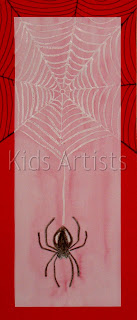- pieces of linoleum from 15 x 15 cm
- lino knife
- mat
- block printing ink
- flat piece of plexiglass
- linoleum roller
- construction paper
- lino press
Draw a leave or mushroom on your linoleum. Remember what you cut away will not print. It is not important to carve deeply into linoleum, just enough so that carved area is lower than the linoleum surface. Always carve away from your hand, always keep your hand behind the back edge of linoleum. When you want to check your printing block, place a piece of paper on the linoleum and rub over the paper with a crayon. This will create a “rubbing” and will give you an idea of what the final print will look like. Squeeze out “toothpaste” amount of ink on plexiglass. Roll ink out. Ink is ready when lines appear. Ink should look wet. If ink starts to look velvety/dry, sprinkle a little bit of water over the ink and add more ink. Put your linoleum block on a newspaper. Roll ink onto linoleum printing block, working quickly to cover all areas. Lay the block on a sheet in the printing press and press. Take away the block and your print is ready.
To make a group work, all kids have to cut out their prints. Ask some students to make a collage of all autumn leaves.



















.jpg)
























